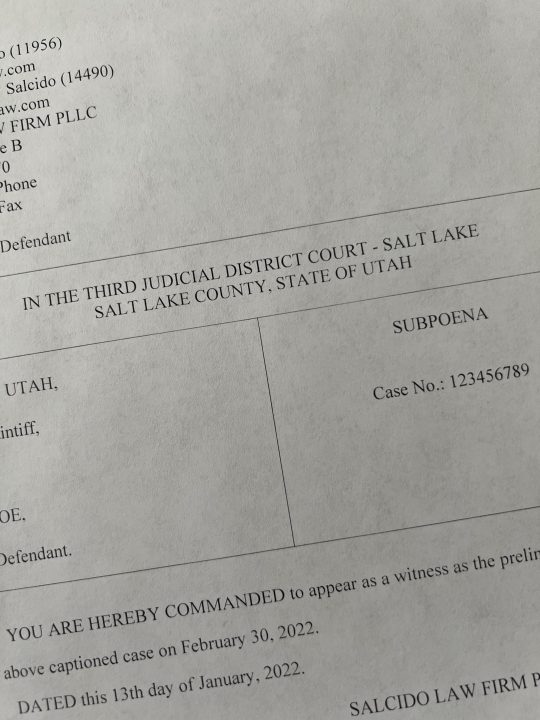Conflicting Evidence and the Burden of Beyond a Reasonable Doubt

Whether conflicting evidence can still result in a jury verdict beyond a reasonable doubt was address in a recent case, State v. Bourk. Bradley Edward Bourk was convicted of aggravated robbery, and the aggravating factor was his use of a dangerous weapon. Store employees stopped Mr. Bourk because they suspected he was shoplifting, but a scuffle ensued. At one point, Mr. Bourk allegedly put his hand into his jacket and pulled out a gun, which a store employee testified to seeing. Mr. Bourk never said that he had a gun, but one of the employees said, “He’s got a gun, he’s got a gun” and stepped away from Mr. Bourk. Mr. Bourk testified that he actually had a little chrome torch lighter, which the employee thought was a gun. He drew a sketch of his torch lighter, and the sketch was admitted as a trial exhibit.
Pursuant to Utah Code Ann. § 76-6-302(1)(a), a person commits aggravated robbery if, in the course of committing robbery, he uses or threatens to use a dangerous weapon. “Dangerous weapon” is defined in Section 76-1-601 in part as any item capable of causing death or serious bodily injury or a facsimile or representation of the item, if the actor’s use or apparent intended use of the item leads the victim to reasonably believe the item is likely to cause death or serious bodily injury.
The Utah Court of Appeals reviewed the evidence and all inferences which may be reasonably drawn from it in the light most favorable to the verdict of the jury. The Court would only reverse when the evidence “is sufficiently inconclusive or inherently improbable that reasonable minds must have entertained a reasonable doubt that the defendant committed the crime of which he or she was convicted.”
The Utah Court of Appeals reasoned that the evidence in this case was not so “inconclusive or inherently improbable.” One victim who was familiar with guns claimed that he saw Mr. Bourk pull out the gun, and another victim shouted that he had a gun. Mr. Bourk claimed he had a chrome torch lighter, which resembles a gun according to his sketch. The Court decided that “reasonable minds could conclude beyond a reasonable doubt that Bourk either wielded a gun or wielded a facsimile of a gun in a manner that led the victims to reasonably believe it was a gun.” Thus, the judgment was affirmed.




